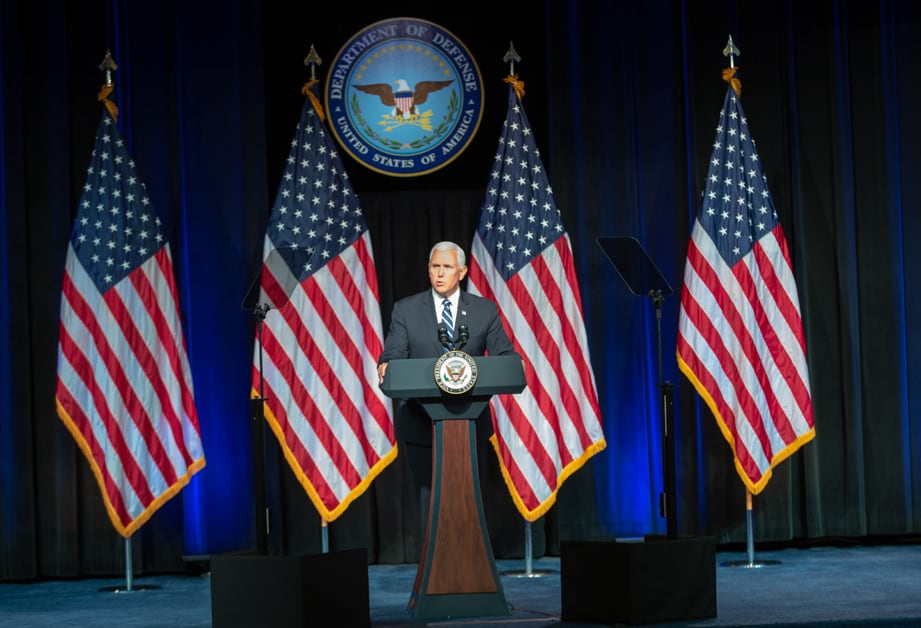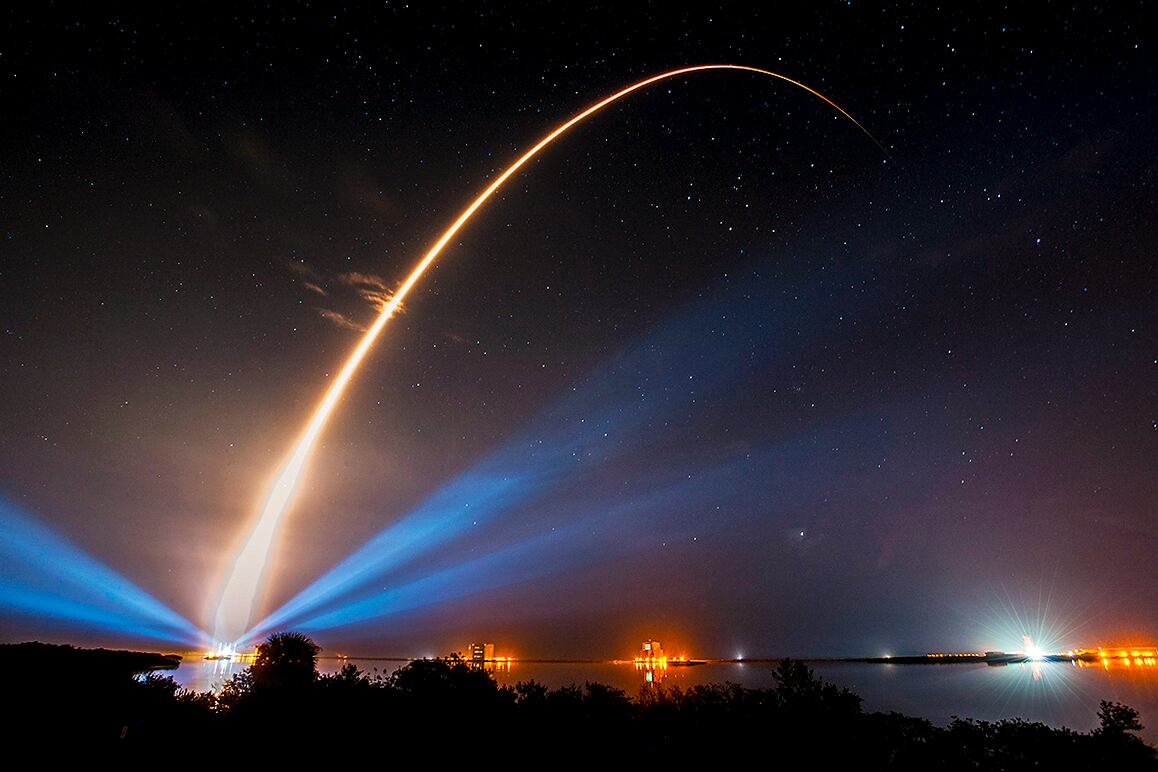WASHINGTON — The Trump administration plans to spend $2 billion in new funding over a five-year period to create its Space Force, during which roughly 15,000 space-related personnel will transfer from existing roles.
Officials unveiled those details and the Pentagon’s legislative proposal for the new military service March 1. Defense leaders sent the formal proposal to Congress Feb. 27 after President Donald Trump ordered its creation in June.
While many of the details have yet to be determined — will the service have a bootcamp (unclear), its own service academy (no), their own uniforms (possible) or recruitment centers (probably) — a Space Force would share resources such as an acquisition chief, general counsel and chaplains with the broader Department of the Air Force.
RELATED

“Space is not just a support function. It’s a war-fighting domain. We have to be prepared to fight, deter and win,” a senior defense official said Friday. “With these changes, we need to adapt.”
“This is a good path forward, which allows us to deliver capabilities, faster, better, and stay ahead of the adversaries,” another defense official said.
Details of the legislative proposal were first reported by Defense News in December but questions about personnel size and budget figures have remained open questions.
In September, Secretary of the Air Force Heather Wilson floated a cost of $13 billion for the Space Force, while an independent estimate from the Center for Strategic and International Studies put the additional costs at around $550 million per year.
However, senior department officials said March 1 that the Pentagon plans to spend about $72 million on setting up a headquarters for the service with about 200 staffers in fiscal 2020. As the force ramps up, those costs could rise to about $500 million per year. Those costs are in addition to the roughly $10 billion the Department of Defense already spends on unclassified space programs.
An executive summary of the legislative proposal stresses that the $2 billion represents “less than 0.05 percent” of the Pentagon’s expected budget during that five-year period, and adds that “more than 95 percent of the Space Force annual budget is estimated to consist of resources that will have been transferred from existing DoD budget accounts.”
“Additional resources will be dedicated to building out the Space Force headquarters and establishing and maintaining new support elements such as education, training, doctrine, and personnel management centers,” the summary continues. “Once the Space Force is fully established, these additive costs are estimated to be $500 million annually, which would represent approximately 0.07 percent of the annual DoD budget.”
In a statement released by the Pentagon, acting Secretary of Defense Patrick Shanahan called the legislative proposal a “historic moment for our nation" and “a strategic step towards securing America’s vital national interests in space.” Wilson added that “We will continue to be the best in the world at space and establishing a dedicated space force strengthens our ability to deter, compete and win in space.”
Five-year timeline
The legislative proposal offers up a rolling plan between FY20 and FY24 for how to phase in the new service.
In FY20, DoD would create the initial Space Force headquarters. An undersecretary of the Air Force for space (who must be nominated and confirmed by the Senate) and the service’s Chief of Staff, a four-star position, would lead the organization. While reporting to the Secretary of the Air Force, the Chief of Staff will also serve on the Joint Chiefs, like how the commandant of the Marine Corps operates.
Such a move would create “institutional advocacy and priority for that domain and it wouldn’t be subject to personalities,” a senior defense official said.
Those initial Space Force personnel will be a “mix of military and civilian personnel with key military leadership positions filled by individuals from each Military Department,” per the summary. “Some personnel will be transferred from the existing Military Services, some new personnel would be hired, and some personnel would be temporarily detailed to the Space Force to provide surge capacity and expertise during stand-up.”
In FY21 and FY22, the plan calls for the majority of missions transferred from existing space-related offices to the new service. “This will include relevant space operational elements, acquisition elements, training and education elements, and other identified space-specific entities,” per the summary.
For example, the Navy’s Mobile User Objective System, a narrowband communications satellite system, or satellites in use by the Missile Defense Agency would likely shift to the Space Force, space officials said. The Secretary of Defense would sign off on those moves.
RELATED

In the following two years, FY23 and FY24, new units or organizations could be stood up, including potentially “activating additional operational, acquisition, and/or training units, as necessary to meet new mission demands and to establish organic space-specific capacity for doctrine development, intelligence analysis, education, etc.”
All told, roughly 15,000 “highly technical” personnel from existing offices will move under the aegis of the Space Force by the end of FY24. Those individuals may be transferred both voluntarily and involuntarily, and will move with the grade, rank, duty, and pay status they had previously.
While in the past decade Air Force Space Command has been described as including as many as 40,000 employees, not all of those workers were strictly focused on space and may have provided support functions.
Some new general officer roles will be required to fill out the Space Force, which requires Congressional authorization. Just how many is unclear, with the proposal promising a report to Congress on that issue sometime in FY20.
One challenge in setting up the Space Force during this period will be collaboration with the intelligence community, whose National Reconnaissance Office (NRO) will remain independent of the new military branch.
The new service, along with its adjacent U.S. Space Combatant Command, will “place greater demand on the IC to better understand space threats and to provide intelligence support to planning, operations, and acquisition,” per the summary.
“The Space Force, in collaboration with the IC, will identify, prioritize, and advocate for the intelligence capabilities, personnel, training, and organizational constructs necessary to provide intelligence support to DoD and IC space missions. Such intelligence support could include staffing a joint intelligence operations center; improving foundational military intelligence, including scientific and technical intelligence; and developing tasking, collection, processing, exploitation, and dissemination processes and capabilities.”
In addition, the Space Force will assume functions currently executed by Air Force Space Command elements within the NRO.
Another uncertainty for the service is how the guard and reserve components will work. The legislative proposal essentially punts on that question, pledging a more detailed proposal for FY21.
Mike Gruss served as the editor-in-chief of Sightline Media Group's stable of news outlets, which includes Army Times, Air Force Times, C4ISRNET, Defense News, Federal Times, Marine Corps, Military Times and Navy Times.
Aaron Mehta was deputy editor and senior Pentagon correspondent for Defense News, covering policy, strategy and acquisition at the highest levels of the Defense Department and its international partners.








